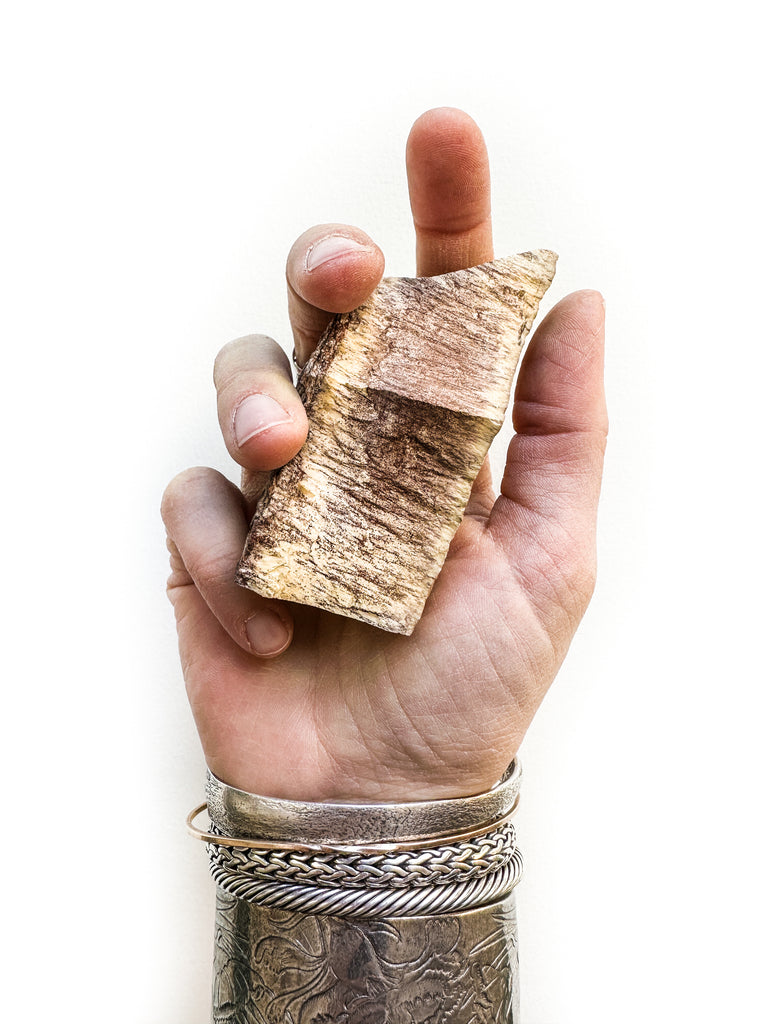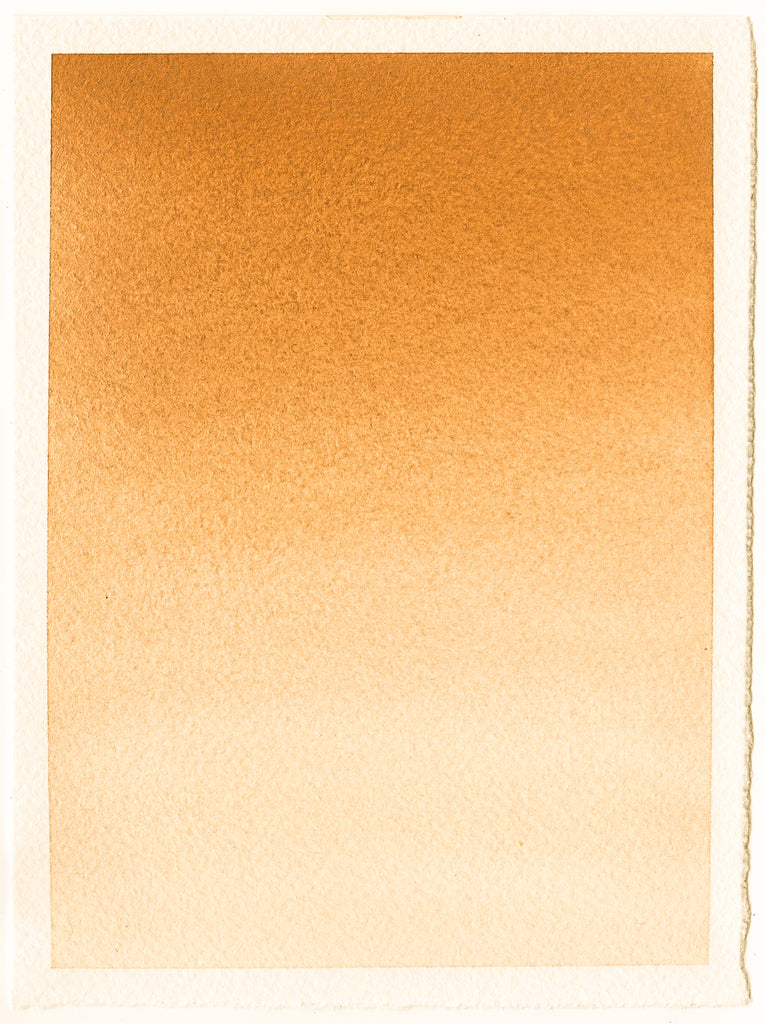
Pigment Histories: Tiger's Eye
Using Tiger's Eye stone as an artist's pigment is a relatively recent development. Either unknown to or overlooked by artists of the past, it is just recently finding its way onto the modern day watercolorist's palette, despite being a commonly available and inexpensive mineral that has been known and used at least ceremonially since antiquity.
What Is Tiger's Eye?
 This is polished amber Tiger's Eye with visible bands of varying width.
This is polished amber Tiger's Eye with visible bands of varying width.
Tiger's Eye is a stone that possesses a captivating luster as light dances across the surface in characteristics waving bands. This eye-catching characteristic makes it easy to recognize, beautiful in jewelry, and a focal point of any rock collection. Most commonly different shades of brown, gold, and amber, it can also be grey and blue in a variety called Hawk's Eye. Tiger's Eye is a specific variety of quartz that is primarily Silicon Dioxide, and very similar in composition to other varieties of quarts such as amethyst.
First Known Use of Tiger's Eye
While various European gentlemen were busying themselves in their delight over first seeing Tiger's Eye along the banks of a river in the eighteenth century, it has been a stone prized by many cultures for thousands of years.
It was a prized gem to the ancient Egyptians who saw in its shining bands the rays of the sun, and therefore associated it with their sun god. Pharaohs wore it as jewelry signifying strength, and had it buried with them in their tombs to guide them in their afterlife because of its resemblance to an eye.
In ancient China, the tiger was an important symbol, the character for 'king' being said to have been derived from the stripes on a tigers face. Tiger's eye stone was carved into small tigers and believed to protect its carriers.
Even Roman soldiers carried carved Tiger's Eye into battle as protection and to give them strength.
Worn as symbolic jewelry, carried as protective amulets, and guiding talismans buried in graves, the Tiger's eye stone has carried great significance for thousands of years.
Tiger's Eye's Name

Tiger's Eye stone has been associated with both tigers and eyes in many great cultures because of its amber bands and moving luminescent bands. Its name is less an etymological evolution and much more tied to a cross-cultural striking resemblance.
The technical geological name of Tiger's Eye is Pseudocrocidolite Quartz.
How Tiger's Eye Is Formed
 This is an unpolished Tiger's Eye stone. Note the parallel striations. This is what causes the light to dance when polished.
This is an unpolished Tiger's Eye stone. Note the parallel striations. This is what causes the light to dance when polished.
Tiger's Eye is a variety of quartz that is considered semi-precious. The lustrous waving bands of light are an effect that is rather unexcitingly called chatoyancy in geologic terms. The formation of Tiger's Eye occurs when crocidolite (a blue asbestos) forms in parallel veins and then transforms to iron oxides, which are then replaced by silica. While the composition changes, a process called pseudomorphism, the structure remains mostly the same, leaving the parallel veins in tact, but colored with iron oxides. (Hawk's Eye or Blue Tiger's Eye forms when the crocidolite is replaced by quartz without the transition to iron oxide.)
Tiger's Eye is rather plentiful and inexpensive compared to other semi-precious stones, and while most often found in South Africa, can be found many other places in the world.
Handling Characteristics of Tiger's Eye In Watercolor

When used as a watercolor, Tiger's Eye handles beautifully. While the chatoyancy or dancing bands are sadly destroyed in the process of making pigment, Tiger's Eye still has some surprises. It has a lovely golden brown hue that adds wonderful subtle warmth to color mixtures. It also has a slight granulation and even hints of variegation, especially in flat washes. The smooth application, fine particle size, and willingness to disperse make it a very dreamy color to paint with.

This is a flat wash of our Japanese Tiger's Eye. It is a rich color that disperses easily, hiding brushstrokes in a wash. Note also the subtle granulation with darker brown particles.
Toxicity
Tiger's Eye has no known toxicity when used as a watercolor.
Lightfastness of Tiger's Eye
Tiger's Eye is considered very lightfast. Receiving its color primarily from Limonite, its coloring is very stable.
Conclusion
While many watercolorists overlook browns, they can make wonderful convenience colors, and are an easy way to tone down the high chroma pop of modern synthetics when painting natural subjects. This is a color that continues to surprise me and I am delighted to have it in my palette.
As always, wishing you happy painting,



